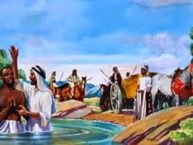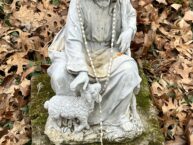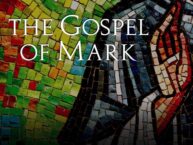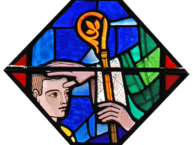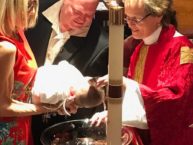March 29, 2015 – Palm Sunday: May God’s words alone be spoken, may God’s words alone be heard. Amen.
Good preachers will say, “Don’t try to preach everything that is going on in the texts for Palm or Passion Sunday – it is too much.” And, they are right. The reason so many clergy try to do this is rather sad, in a way. We know that many of our parishioners will not continue the journey on Maundy Thursday and Good Friday, and there is so much to be experienced there, and we know that without it, Easter loses the power of its full meaning. As I said last year, that is why the passion is read here – on Palm Sunday where it really doesn’t belong. We get the full story, and then in the week to come, we really experience each part of that story. It is something that shouldn’t be read today, but yet it is.
And so, I agree with my preacher colleagues, that with the passion included, it is too much to try and unpack it all. In fact, some even argue there is no need for a sermon on this day – just listen to all the texts. There is a good point to be made for that – but…no such luck for you’all.
We have the liturgy of the Word, the Eucharist, and then the Passion. But right at the beginning, in the liturgy of the Palms, we have this very odd story about a colt, Jesus, and the temple. And because we will talk more about the passion in the days to come, I will not talk about it on Palm Sunday.
In the liturgy of the Palms, which today is Mark 11:1-11, Jesus tells his disciples to go into the village, untie a colt (a young donkey really), tell folks not to worry – that they are just borrowing it, and then he goes toward Jerusalem riding it as people shout praises of him in the streets. He then goes into the temple, looks around, and heads back to Bethany.
After that wild entry into the city – all the palms, and shouts of Hosanna, this is how he ends the day? According the gospel, “…he entered Jerusalem and went into the temple; and when he had looked around at everything, as it was already late, he went out to Bethany with the twelve.” What was he looking at or for, and why was that such an important detail to note – particularly in this, the Gospel of Mark, written in such a hurry at the time of the 2nd temple destruction (around 68-70 CE).
This gospel author is not one for long narratives as you find in Matthew, or poetic hymns and lengthy discourses as the authors of John provide. Nope – this is the short, sweet, and to the point Gospel of Mark – so, why all this about borrowing a donkey, heading toward Jerusalem and then going back to Bethany until the next day? While Matthew & Luke have the donkey detail, only in Mark does Jesus enter the temple to look around and then quietly leaving Jerusalem for the night. So, for a gospel that is generally short on detail, why is this so important for us to know – this stop at the temple. What was Jesus doing?
I suspect that he was looking for something, or perhaps confirming something to be in place. The gospel tells us that he “looked around at everything.” Did he see the sacrifice in preparation for the upcoming Passover? Were the money changers still doing business? Or was it empty, quiet, waiting. I like to think that all the people had left. I can imagine him walking into the temple, the light of the sun fading and its low setting casting shadows on the walls. Perhaps taking a moment to consider, in the quiet – away from the crowds – what was to take place in the days ahead.
But, why does it matter to us? Why is this temple stop by Jesus important? What then was Jesus looking for in the temple that night and what did he see?
If we look closely at what happened the very next morning, we will know. It says in the gospel of Mark that Jesus was hungry, and saw a fig tree with leaves. When he went to get something to eat, he found no fruit growing out of its branches. He cursed the fig tree. The fig tree represents the temple authorities, the leaders of the Jewish people. They have not produced fruit for God. They have spiritually starved God’s people.
After the craziness of the palm parade, Jesus went to the place where people should be spiritually fed. Where he could be fed. And I suspect he left feeling spiritually hungry. His anger the next day at the fig tree – a symbol of the temple elite – is evidence of that. Whatever he did see, it was clear that he knew what he had to do – but that moment was not the right time.
That is what Palm Sunday is supposed to be for us.
The reason the passion feels awkward today is because it isn’t time yet. That time will come, and for those who want to really experience the fullest meaning of Easter, it will be there waiting for you on Maundy Thursday and Good Friday.
The procession of the palms we do today, is as it was for Jesus, is an announcement that things are going to change. It is a transition point only, and not the full story. And what we experience in the days to come, like it was for those who were with Jesus that night, will change us, if we let it. Palm Sunday is our time in Bethany. Our time to consider what we have seen, and what God calls us to do in response.
So, what did he see in the temple that afternoon?
Perhaps the question should be, what do you see when you come here? We are the body of Christ – we have looked around at everything in the church – the full church of all Christians around the world. What do we see?
Do we see churches growing and bearing fruit – feeding those who are spiritually hungry and thirsty? Or do we see dying churches that starve the marginalized with closed doors?
As we look into the fire, as we close our prayers and head to sleep – where do our thoughts take us? What do we know we now need to do in the world after we rise in the morning? What tables need to be overturned? What old branches need to be cut down that others may have new life?
It is something to consider, because there will be a tomorrow when we will have to act. What will the morning bring for you – for the church – for the world?
Amen.
Rev. Diana L. Wilcox
Christ Church in Bloomfield & Glen Ridge
March 29, 2015
Palm Sunday
1st Reading – Isaiah 50:4-9a
Psalm 31:9-16
2nd Reading – Philippians 2:5-11
Gospel – Mark 11:1-11 & Mark 14:1-11

